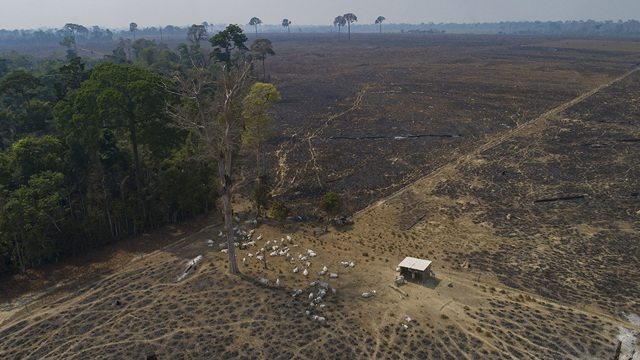October 26, 2021 12:37 pm
The world‘s wildlife population has declined by an average of 68 percent over the past fifty years, according to the World Wide Fund for Nature (WWF). Deforestation, intensive agriculture and farming, and changes in land use are the main culprits for this loss. But nature could recover if it had the chance. This was the goal of COP 15, a United Nations summit on biodiversity that was held in mid-October in Kunming, China.
More than 100 countries have recognized the need to end the decline of species by 2030 and have admitted that damage to the environment and the climate crisis have negative consequences on biodiversity. In this sense, trend reversals are long overdue, not only for the sake of nature: the very actions that threaten ecosystems represent a danger to human health.
The link between destructive environmental practices and the emergence of diseases is confirmed by increasingly numerous studies. But the causal links are not yet clear, as evidenced by the difficulties in determining the origin of covid-19 (the virus could have come out of a laboratory or passed from bats to humans, through an intermediate species), so understand why Ecosystem changes are linked to the spread of disease, and what increases the risk of epidemics.
Efforts needed
Of the more than 330 diseases that emerged from 1940 to 2004, about two thirds are zoonotic, that is, they are transmitted from animals to humans. This is the case, for example, of AIDS caused by the HIV virus, and probably of covid-19. Over 70 percent of these diseases originated in wild, not domesticated animals. And even if many factors contribute to the transmission of a disease – population growth, migrations and climate change – scientists are studying with increasing attention the way in which environmental alterations of the territories affect the transmission chain of a pathogen from animals. to human beings.
Deforestation promotes contact between humans and disease-carrying animals
A study published in March 2021 by researchers from the Universities of Montpellier and Aix-Marseille, France, identified a link between the reduction in global forest area from 1990 to 2016 and the increase in reported epidemics, also taking into account the fact that deforestation usually leads to an increase in humans living nearby. As the forest area has shrunk (from 31.6 to 30.7 per cent), the presence of diseases has grown, particularly in tropical areas rich in biodiversity.
One of the likely reasons for the increase in pathogens is that deforestation promotes contact between humans and disease-carrying animals. Scientists have identified a correlation between declining forest area in West and Central Africa and Ebola outbreaks that broke out between 2004 and 2014. Ebola virus is thought to be transmitted by infected bats and primates, although the dynamics it is still not entirely clear.
Interactions with other mammals aren’t the only concern. Felling of trees could also increase the threat to humans posed by viral infections transmitted through mosquito bites, such as zika, dengue and chikungunya. Researchers from the University of Florida in the United States analyzed studies of 87 mosquito species in twelve countries. About half of these species were linked to deforested environments. And more than half transmit disease.
Launch ramp
The transmission of diseases can also be favored by the planting of monocultures instead of centuries-old forests, as in the case of plantations to obtain palm oil. If the natural habitats of predators are destroyed and their populations diminish, rodents, mosquitoes, bats and some primates can proliferate. These in turn can carry zoonotic pathogens with them, in addition to the fact that they usually congregate in places where they are most exposed to humans and livestock. Rodents, for example, often live in the border areas between newly created forests and pastures.
A 2020 study published in the journal Science by a group of disease ecology experts called the margins of tropical forests as an “important launch pad” for new viruses. Wildlife can also move to human settlements in search of food. Mango trees planted on Malaysia’s pig farms likely attracted fruit bats that transmitted nipah, a virus that infected local pig farmers in 1999 and causes epidemics in Bangladesh every year.
More studies are therefore needed to understand how human interactions with nature favor the spread of diseases. But the emergence of new pathogens, such as sars-cov-2 that causes covid-19, makes biodiversity conservation efforts even more necessary.
(Translation by Federico Ferrone)
This article appeared in the British weekly The Economist.
.
